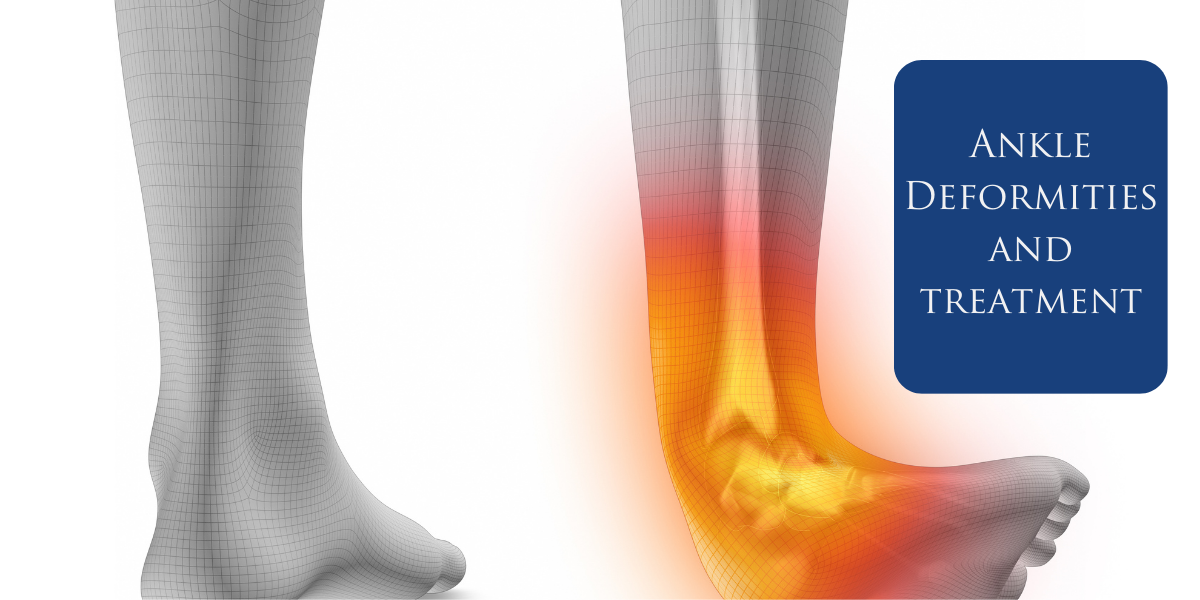Ankle deformities are conditions where the structure of the ankle joint is abnormal. These deformities can affect the way you walk, your posture, and can even lead to chronic pain. In this article, we will explore different types of ankle deformities, their causes, and available treatments.
Types of Ankle Deformities
Ankle deformities can vary in severity and type. The most common types include:
1. Flatfoot
Flatfoot is a condition where the arch of the foot is flattened, causing the entire foot to touch the ground. This can affect the alignment of the ankle and lead to discomfort or pain in the foot and ankle.
2. Cavus Foot
Cavus foot is characterized by a high arch, which puts extra pressure on the heel and ball of the foot. This deformity can cause instability in the ankle, leading to sprains or fractures.
3. Ankle Varus and Valgus
- Ankle Varus: The foot tilts inward, placing more weight on the outside of the foot.
- Ankle Valgus: The foot tilts outward, putting pressure on the inner side. Both conditions can affect walking and balance.
4. Clubfoot
Clubfoot is a congenital deformity where the foot is twisted out of shape or position. In most cases, the foot points downward and inward.
5. Charcot Foot
Charcot foot is a serious condition often seen in people with diabetes. It involves weakening of the bones, leading to fractures and dislocations in the ankle joint. Over time, this can result in significant deformity.
Causes of Ankle Deformities
There are several reasons why ankle deformities occur, including:
- Congenital Defects: Some ankle deformities, such as clubfoot, are present at birth.
- Injuries: Severe sprains, fractures, or dislocations can cause lasting damage to the ankle, leading to deformity.
- Arthritis: Osteoarthritis or rheumatoid arthritis can wear down cartilage and bones in the ankle, leading to misalignment.
- Nerve Damage: Conditions like Charcot foot are linked to nerve damage, particularly in people with diabetes.
- Muscle Imbalance: When muscles around the ankle are weakened or not functioning properly, the alignment of the ankle can be compromised.
Treatment Options for Ankle Deformities
The treatment of ankle deformities depends on the type and severity of the condition. Common treatments include:
1. Orthotics
Custom-made shoe inserts or braces can help correct mild deformities by providing support and improving alignment.
2. Physical Therapy
Exercises designed to strengthen the muscles around the ankle can help improve stability and function.
3. Medications
For deformities caused by arthritis, anti-inflammatory medications may help reduce pain and swelling.
4. Surgery
In more severe cases, surgical intervention may be necessary to correct the deformity. Surgery could involve bone realignment, tendon transfer, or joint fusion.
5. Casting or Bracing
For congenital conditions like clubfoot, casting or bracing is often used in infants to gradually correct the deformity without surgery.
Preventing Ankle Deformities
To lower the risk of developing ankle deformities, it’s important to:
- Wear Proper Footwear: Supportive shoes can prevent excessive strain on the ankle.
- Stay Active: Regular exercise helps maintain the strength and flexibility of your ankle joints.
- Manage Chronic Conditions: If you have diabetes or arthritis, managing these conditions properly can prevent complications like Charcot foot.
- Seek Early Treatment: If you experience ankle pain or notice a deformity, consult a specialist early to prevent the problem from worsening.
Consulting an Ankle and Foot Specialist in Pune
If you or a loved one is experiencing an ankle deformity, it’s essential to seek expert care. Dr. Chetan Oswal is a highly regarded ankle and foot specialist in Pune at Orthowin Specialty Clinic, Dr. Chetan Oswal offers personalized treatment plans to address various ankle and foot conditions, ensuring that patients receive the best possible care. Whether you’re dealing with a congenital deformity, an injury, or a chronic condition, Dr. Chetan Oswal’s expertise can help you get back on your feet.





